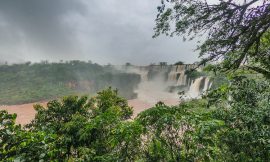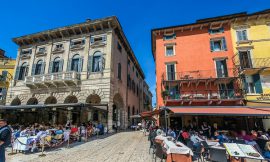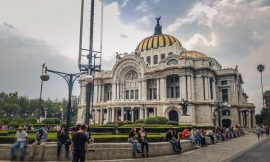From the bus terminal in Puerto Iguazu, we booked a bus to Foz do Iguacu leaving at 8.30 AM for 60 ARS1 each. The bus seems to be a standard public transport bus rather than a tour company bus. It takes about 10 minutes to cross the bridge and arrive at the Brazilian Customs Border Control office. Here, the driver told us to go to the customs office and that we’ll be picked up from where he left us. There was no one else at the customs office so we got our entry stamp quickly. We then went back to the bus stop and waited for the next bus into town. The next bus which came wasn’t from the company we booked with, but we got on anyway and they didn’t ask to check our ticket. So we assume they just pick people up from here and assume they’ve paid. It was then another 20 minutes to get into town and the bus stopped at several locations, so we got off at one which was close to our hotel.
The City
The city was much bigger than I was expecting, and a lot bigger than Puerto Iguazu. The city center was quite busy and there is even a mall near the city center. Our hotel was in the city center, and after dropping off our bags, we headed to the bus terminal to try and find a bus to the falls. We needed cash though and we stopped by an ATM on the way but it didn’t work. The bus terminal only takes cash, so we headed to the mall which was a 20-minute walk away. There were ATMs there and if they didn’t work for our cards, then we planned to buy a SIM to order an Uber. Luckily. the ATM there worked and at this point, it was around noon so we hailed a taxi to get back to the terminal rather than walk back. However, when we got in the cab, the driver said he could take us to to the national park for 50 BRL2. It was only a 30-minute drive by taxi and this was cheaper than expected so we agreed.
Foz do Iguacu National Park
At the park entrance, we joined the queue and waited about 15 minutes to buy our tickets. It cost 63.60 BRL and they accept credit card payments. With the tickets, you have access to buses that go up and down the park. They leave every 10 minutes or so and are on a first come first serve basis. The bus makes several stops and we got off at the one of a viewpoint with the start of a trail. From the viewpoint, you get a panoramic view of the smaller falls. We took some pictures here and then started the trail to the viewpoint for the Garganta do Diabo (Devil’s Throat). About 10 minutes into the trail, there is another viewpoint of another panoramic of the falls. This viewpoint was a little busy so we had to wait a couple of minutes to get some pictures here. Then, we continued for another 10-15 minutes to reach the Devil’s Throat viewpoint.


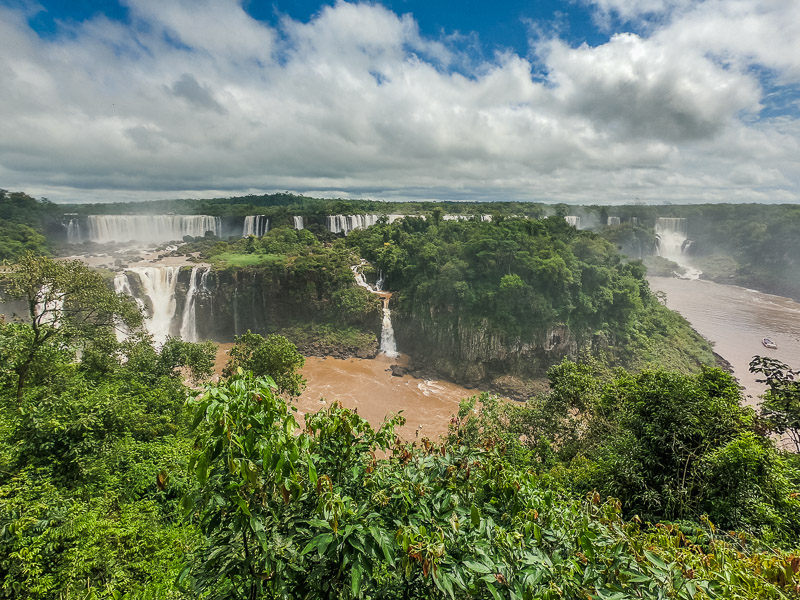

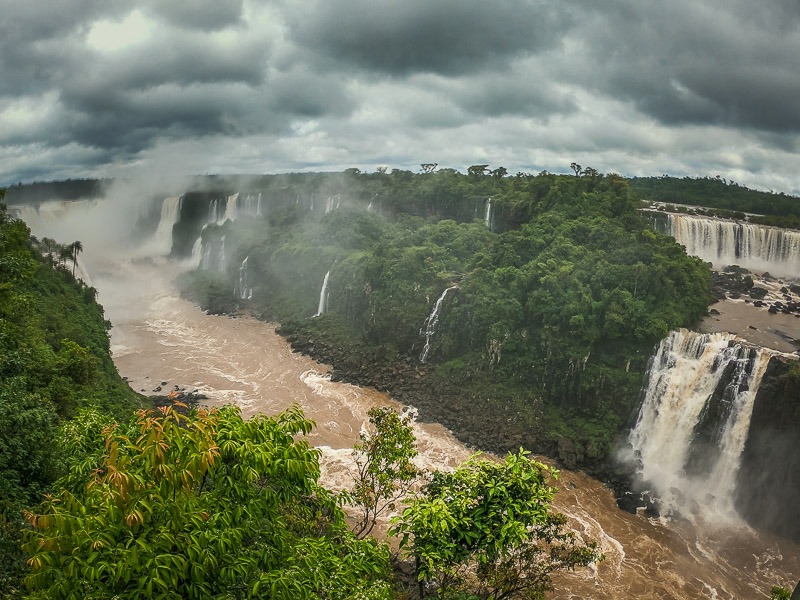

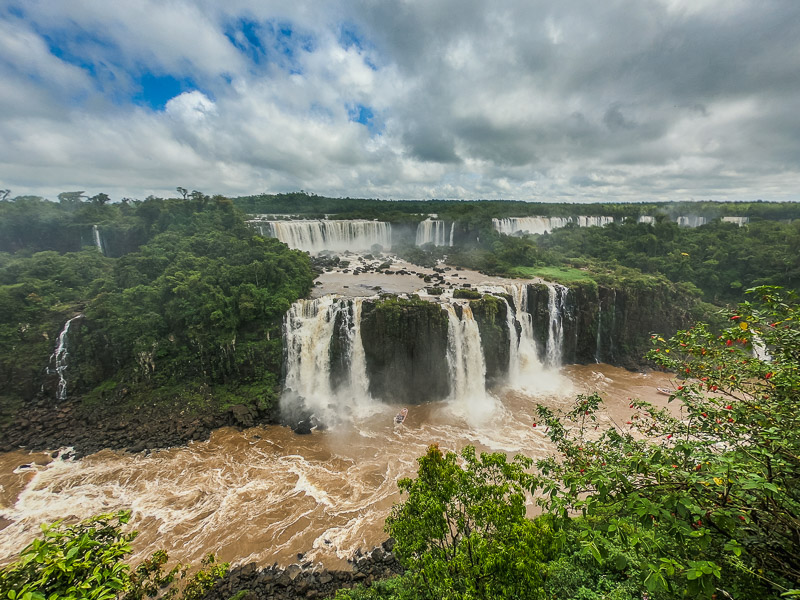



From the trail, you walk onto some bridges which extend into the river. There are falls all around you and below you. You’ll get wet from walking around since the force of the falls creates a mist that reaches the bridge. On this day, we had clearer skies so the sun created a small rainbow on one of the falls below. The bridge can get quite busy so it took some time for us to get pictures with the surrounding falls. We spent around 20 minutes walking around the bridges before heading to the Elevadores do Garganta do Diabo (Devil’s Throat Lifts). This is a concrete observation tower built next to the falls. You can get some close-up pictures from the deck below. From the upper deck, you’ll get a panoramic view of the falls from above. Leaving this deck, there is a food court and bar to grab some lunch or drinks whilst enjoying the view. It was now around 3 PM so we decided to get take the bus back to the Macuco Safari where the boat tours leave from.
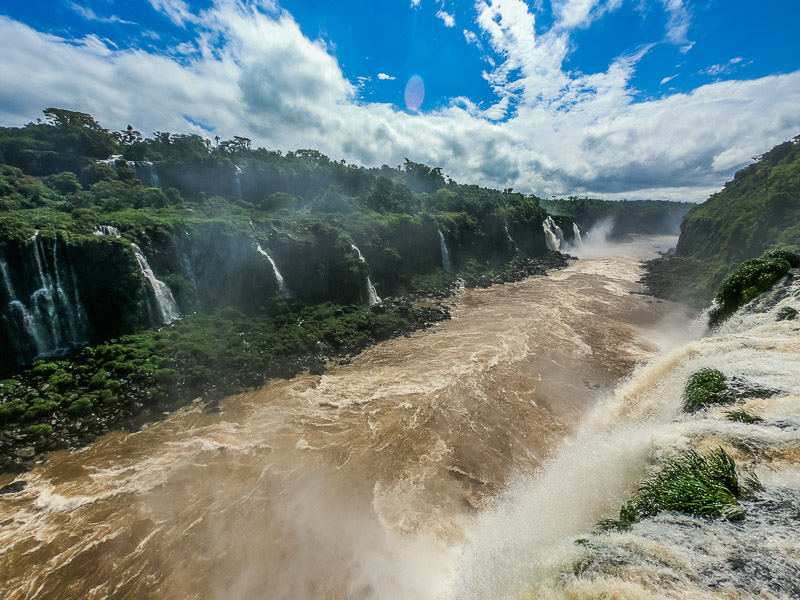

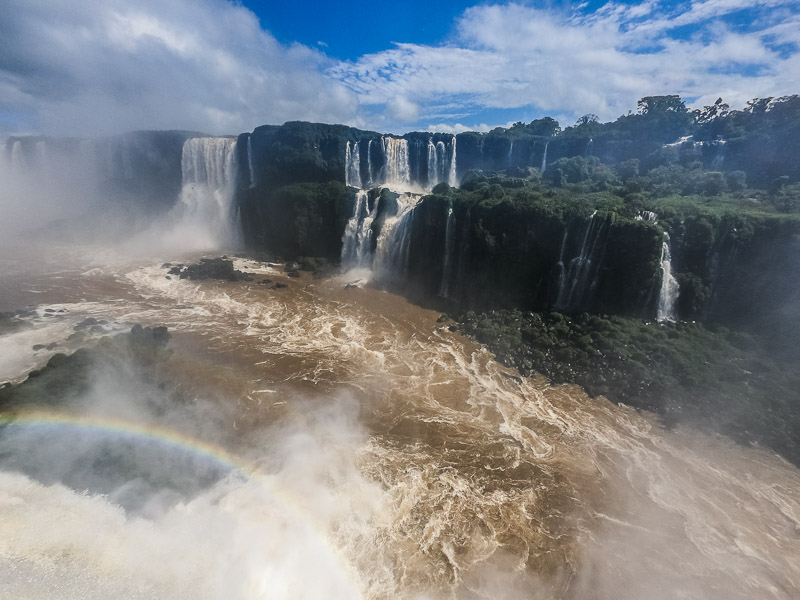



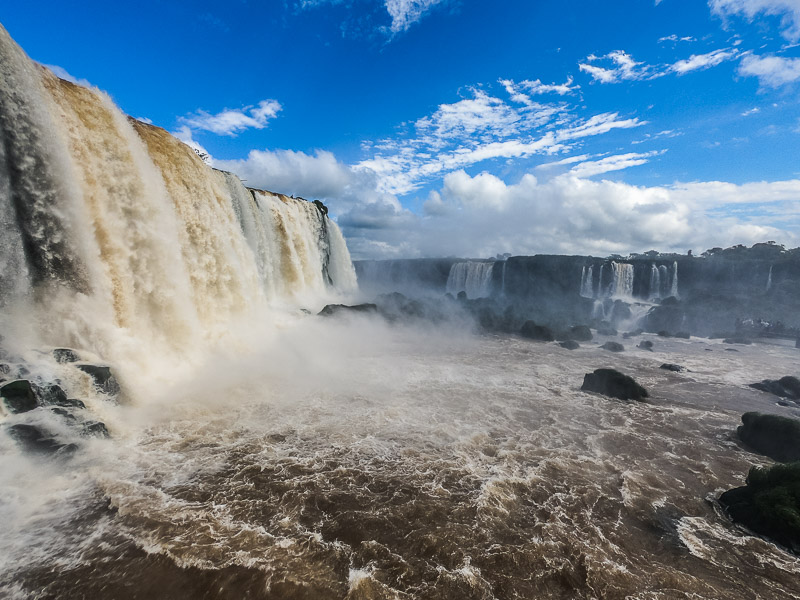

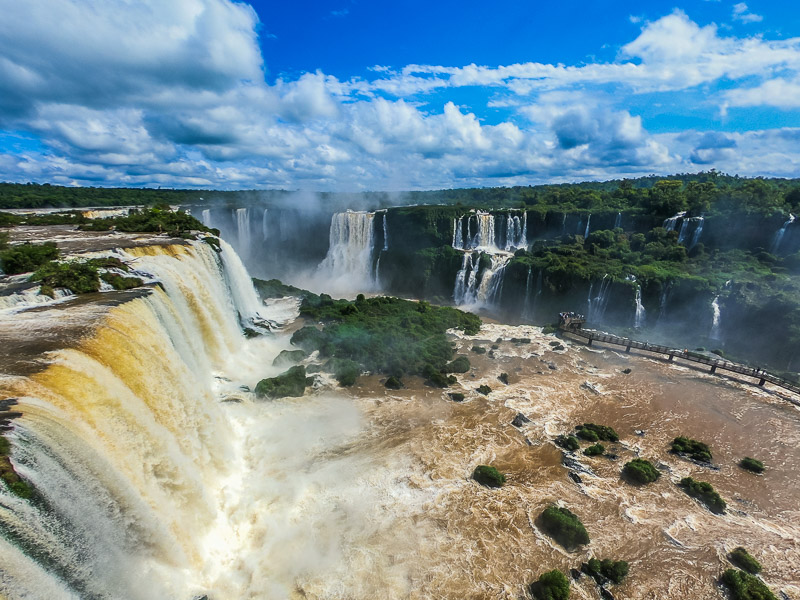

Once at Macuco, there were still some slots left for a safari and boat ride to the falls. It was quite pricey at 215.40 BRL, more expensive than when we asked in Argentina, but it’s a once in a lifetime experience so we went for it and did not regret it. The safari tour goes through the rainforest to the shore. A train buggy takes you about halfway through. Then you’re given the option to walk the rest of the way for about 15-20 minutes or continue on the train buggy. On the walk, the guide leads you through the rainforest giving info on the flora and fauna in the area. Once we reach the shore, there are changing room facilities and lockers to leave your stuff. Lockers cost 10 BRL and you should leave all valuables and electronics that aren’t waterproof since you will get soaked. Once the group has changed, we head down to the pier, put on life vests, and board the speedboat. The speedboats are quite large with capacity for about 20 people. We then set out upstream for about 10 minutes. The river has a strong current and the boat maneuvers into the waves which make for an adrenaline-filled ride.
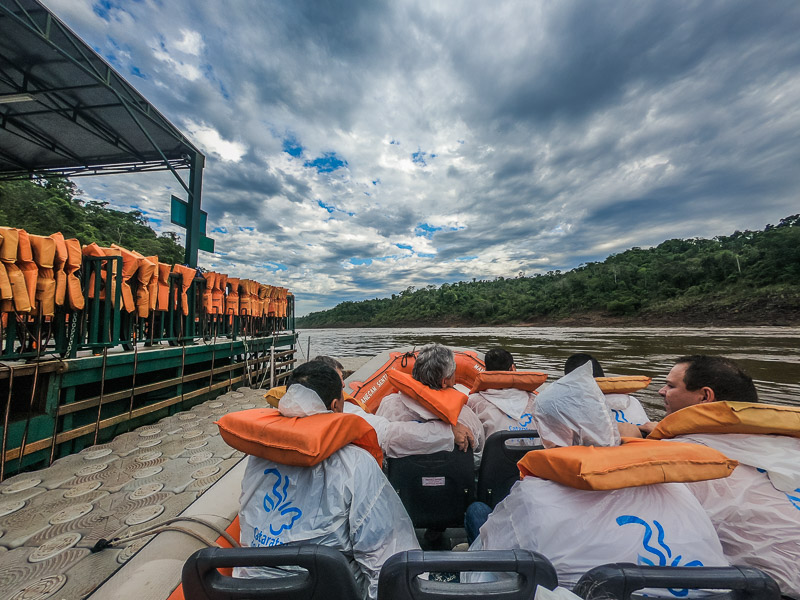

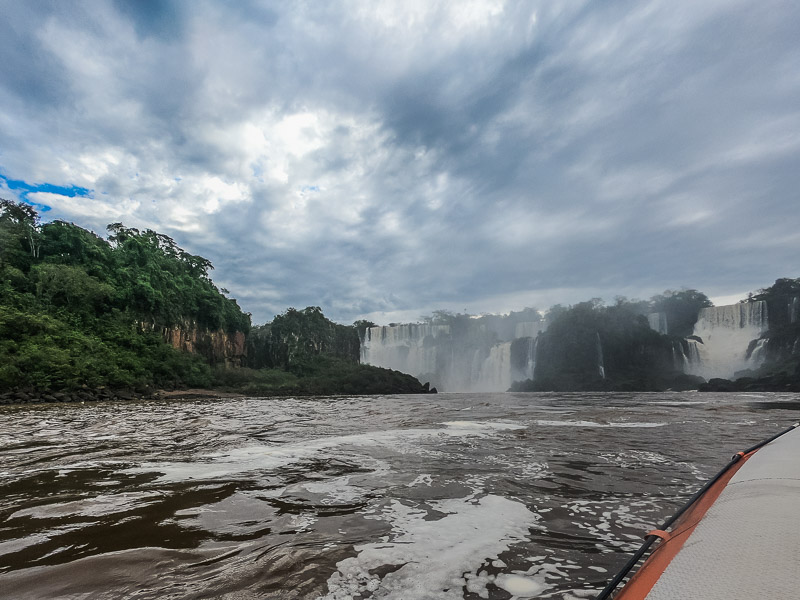

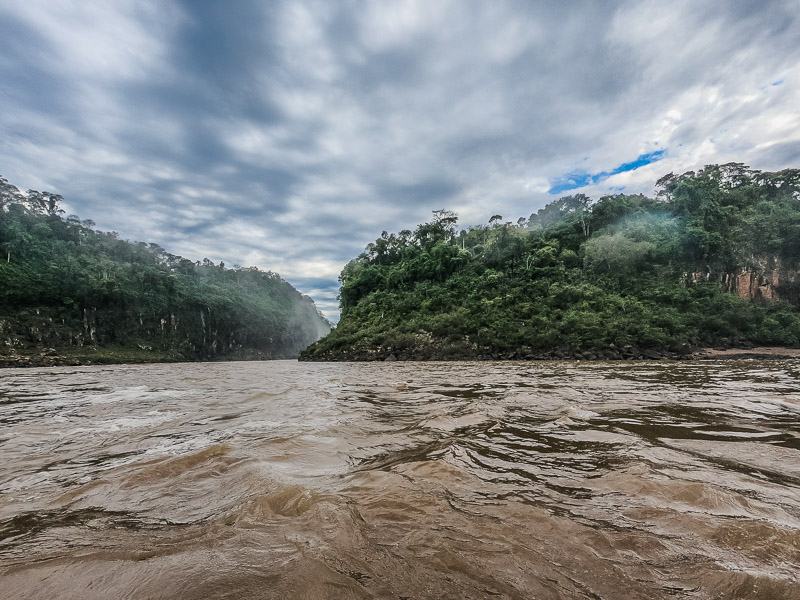

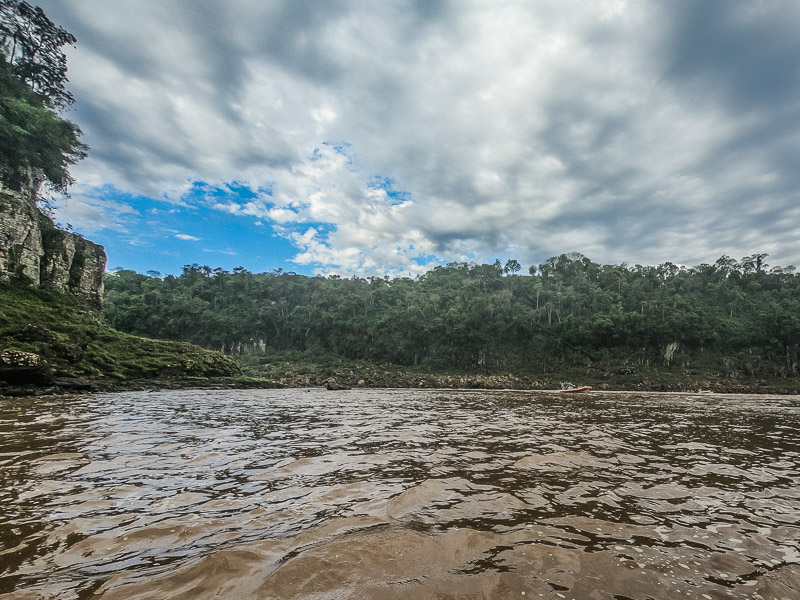

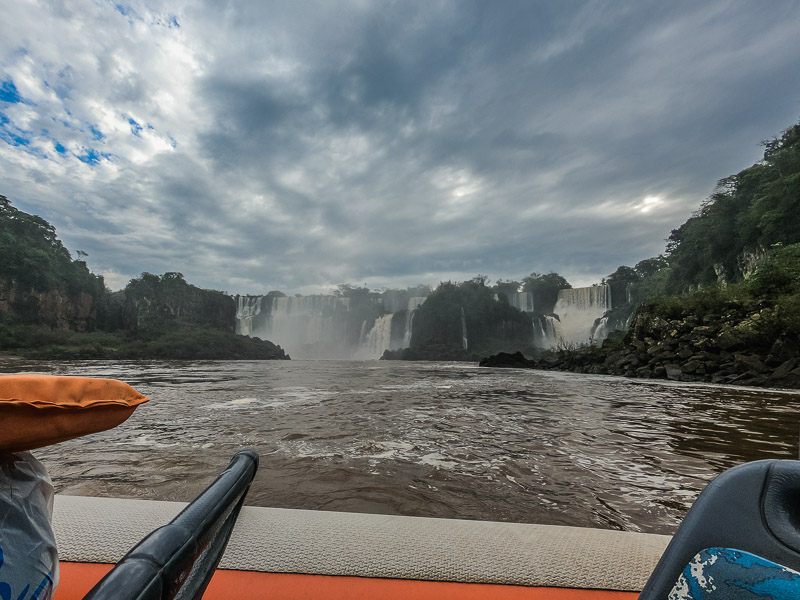

Once we reach the falls, the boat floats around for a couple of minutes for everyone to take pictures. Then the boat positions itself in front of one of the towering falls. Everyone holds their breath as the boat heads towards the waterfall. As we get closer, sprays of mist turn into a high-pressure shower as the water comes thundering down meters away. These 5-10 seconds are exhilarating and the boat pulls away for a couple of seconds allowing us to catch our breath before heading in again. It’s amazing feeling the power of the falls this close up. After going in a second time, the boat pulls away, and it’s then time to head back; our hearts still pounding fast as it recovers from what we’ve just put our body through. Back at the pier we return the life vests and head up to the changing rooms to get our belongings. We then take the train buggy back to the main road where we wait for the bus back to the park entrance. It was now around 5.15 PM and the buses were coming by already full. We managed to get on the 3rd bus which had a couple of empty seats. At the park entrance, we asked where we could take a bus back to the city and were directed towards the bus stop. Several people here were waiting for the bus which came after about 10 minutes of waiting. The one-way ticket cost 3.05 BRL and took about 40 minutes to reach the city center.

